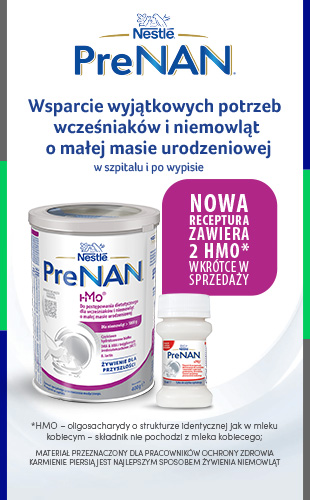Leczenie złamania obojczyka u dzieci z zastosowaniem nowego narzędzia terapeutycznego prostotrzymacza ortopedycznego ERH-53
Słowa kluczowe / Keywords:
Streszczenie:
Wstęp: Złamanie obojczyka zdarza się w wieku dziecięcym bardzo często. Jest to drugie najczęstsze złamanie po złamaniach kości przedramion typu
Collesa.
Cel: Celem pracy jest przedstawienie skuteczności stosowania prostotrzymacza ósemkowego ERH- 53 (ERHAM) jako podstawowego postepowania
terapeutycznego w przypadku złamań obojczyka u dzieci.
Materiał i metoda: W latach 2010- 2013 w Uniwersyteckim Szpitalu Dziecięcym w Krakowie leczono 437 dzieci w wieku od 1 miesiąc do 18 lat z powodu
złamania obojczyka. Średnia wieku 7 lat. W 54% przypadków stosowano prostotrzymacz ósemkowy, w 23% temblak, u 6% chorych nie stosowano
żadnego unieruchomienia. 2 chłopców w wieku 17 lat było operowanych.
Wyniki: Efekt leczniczy był bardzo dobry.
Wnioski: Stosowany w naszym Szpitalu prostotrzymacz ósemkowy ERH-53 jest skutecznym narzędziem ortopedycznym stosowanym w złamaniach
obojczyka u dzieci.
Abstract:
Objective: The employed to date classic methods of treating clavicular fractures in children by means of a Dessault-type plaster brace do not stand
the test of time. The objective of the report is the presentation of the effectiveness of an ERH-53 ‘eight’ type shoulder brace employed not as an
alternative solution, but rather as the fundamental management method in clavicular fractures in children, regardless of the fracture character.
Material and method: In the course of numerous follow-up studies and observation of the healing process in clavicular fractures in children carried
out at the University Children’s Hospital of Cracow, a solution was proposed to treat such fractures by means of an ERH-53 “eight” type shoulder brace.
The “device” uses a very simple but extremely successful method of continuous bilateral stretching of the shoulder girdle employing a modified “eight”
type immobilization in the form of braces. In addition, the brace does not limit excessively the movement of the upper extremities of the child and
is definitely easier in maintaining the necessary hygiene. Of 437 children with clavicular fractures treated in the years 2010-2013, more than one-half
were treated using an ERH-53 “eight” type shoulder brace.
Results: The therapeutic effects were very good, what was confirmed by follow-up X-ray imaging; in the present material, not a single case of
complications in the form of persistent pseudoarthrosis was noted.
Conclusions: The ERH-53 “eight” type shoulder brace employed in our hospital is an effective orthopedic tool employed in clavicular fractures in
children.
Strona przeznaczona dla lekarzy i osób pracujących w ochronie zdrowia. Wchodząc tu, potwierdzasz, że jesteś osobą uprawnioną do przeglądania zawartych na tej stronie treści.


